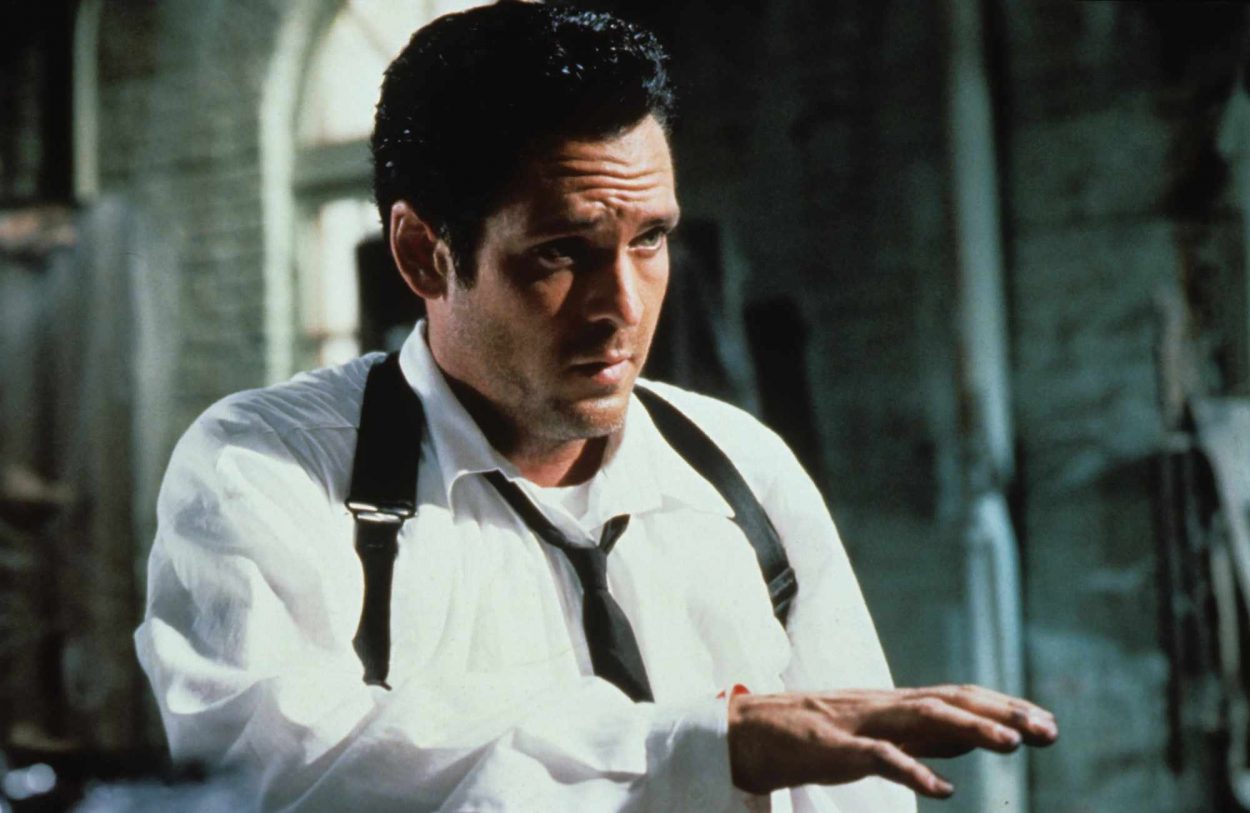Japanese monster movies – known to the Japanese and to hardcore fans worldwide as kaijû eiga – are generally considered in terms of stuntmen wearing heavy rubber suits meant to disguise every last vestige of their humanity. However, in the mid-1960s, this changed as Toho Company, their star director Ishirô Honda, and special effects wizard Eiji Tsubaraya embarked on what became (at least in their original design) a pair of Frankenstein pictures – but which, in international release, were not always so clearly related. In these two films, Furankenshutain taichitei kaijû Baragon (US: Frankenstein Conquers the World, 1965) and Furankenshutain no kaijû: Sanda tai Gaira (US: War of the Gargantuas, 1966) – Tsubaraya began to deconstruct the imagery that put his work on the map with Gojira (US: Godzilla! King of the Monsters, 1954), paring it down to a more discernibly human look that paved the way for his great television success of 1967: Uratoraman (US: Ultraman).
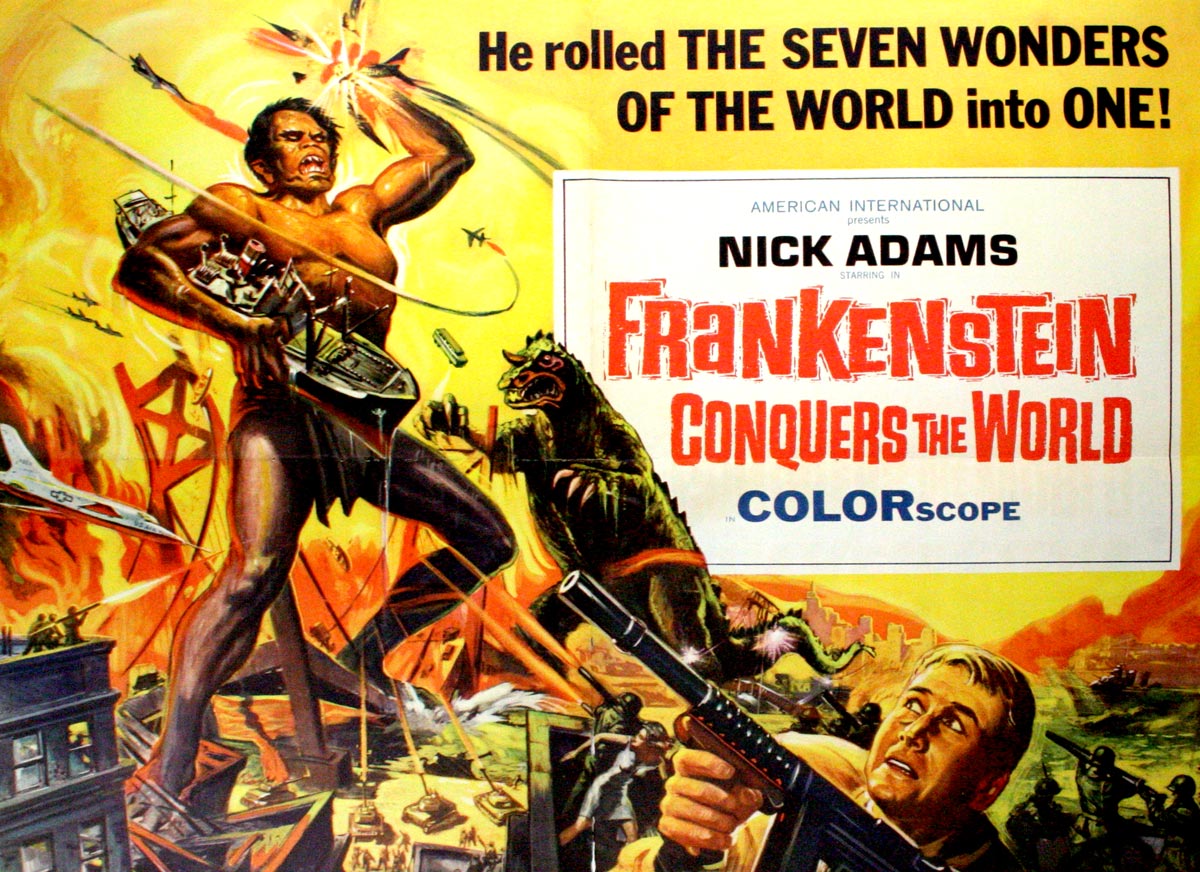
Honda’s original Gojira had been remarkable for presenting its apocalyptic monster imagery in an almost documentary context. Frankenstein Conquers the World – despite being in widescreen, color, and starring imported actor Nick Adams (Rebel Without a Cause) – does something similar, opening with a meta prologue proposing that the Frankenstein monster was not a fictional creation of Mary Shelley but actually existed, and that its undying heart – preserved in liquid protein inside an important-looking briefcase – miraculously eluded bombings in Germany and the Pacific before arriving safely at a laboratory in Hiroshima… just in time for a front-row seat to August 6, 1945. Though Toho had always used Godzilla as a symbol of the potential for atomic and nuclear destruction, its connection to the bombings suffered by Japan during the war were never made explicit, so the literal depiction of the event in Frankenstein Conquers the World is remarkable. We never see the usual mushroom cloud; instead, we see a city subsumed in waves of fire.
Fifteen years later, the story’s present tense gets underway as a series of animal mutilations is linked – first by villagers, then by the media – to a marauding feral boy who has been feeding on them. He is discovered living in a cave and brought to a clinic in Hiroshima where Drs. James Bowen (Adams – identified in early stills captions as “Dr. James Brown”!), Sueko Togami (Kumi Mizuno, the glamorous Queen of Kaijû), and Yuzo Kawaji (Tadao Takashima) – three medical professionals characterized by an abundance of heart – regularly attend to those shattered bodies and lives still complicated by the event that continues to cast a shadow over so many lives. Followed to the clinic by the media, the doctors reveal that the boy, who looks perhaps eight years old and is characterized by the usual flat head and heavy brow associated with Frankenstein, is definitely Caucasian (a strange insistence, considering that he is initially played by Kenichiro Kawaji), unaffected by radiation, and still a growing boy – to say the very least! In his next appearance, the wild child has rapidly matured to the size of an actual teenager, and is played from that point on with tragic, outsiderly tenderness by Kôji Furuhata. Working on a hunch, Kawaji travels to Europe to confirm the rumors surrounding Frankenstein’s heart and learns of its likely fate, and a visit from Mr. Kawai (Yoshio Tsuchiya, present in the prologue scenes) offers the theory that the boy may be an atomic mutation of Frankenstein’s heart, causing a living human form to be regenerated around it. The only way to prove the child’s identity beyond all doubt is to amputate one of its limbs to see if it regenerates – a suggestion the doctors reject as needlessly cruel. As their ward’s behavior grows more volatile (a TV twist party program really sets him off), the doctors are persuaded – for his own safety – to keep him in a chained cell. In a scene obviously influenced by the original King Kong (1933), the now-gigantic teen responds violently to the flashbulbs of visiting cameramen and breaks free… leaving behind a crawling severed hand that proves his patrimony before expiring from lack of protein and direct infusions from its heart.
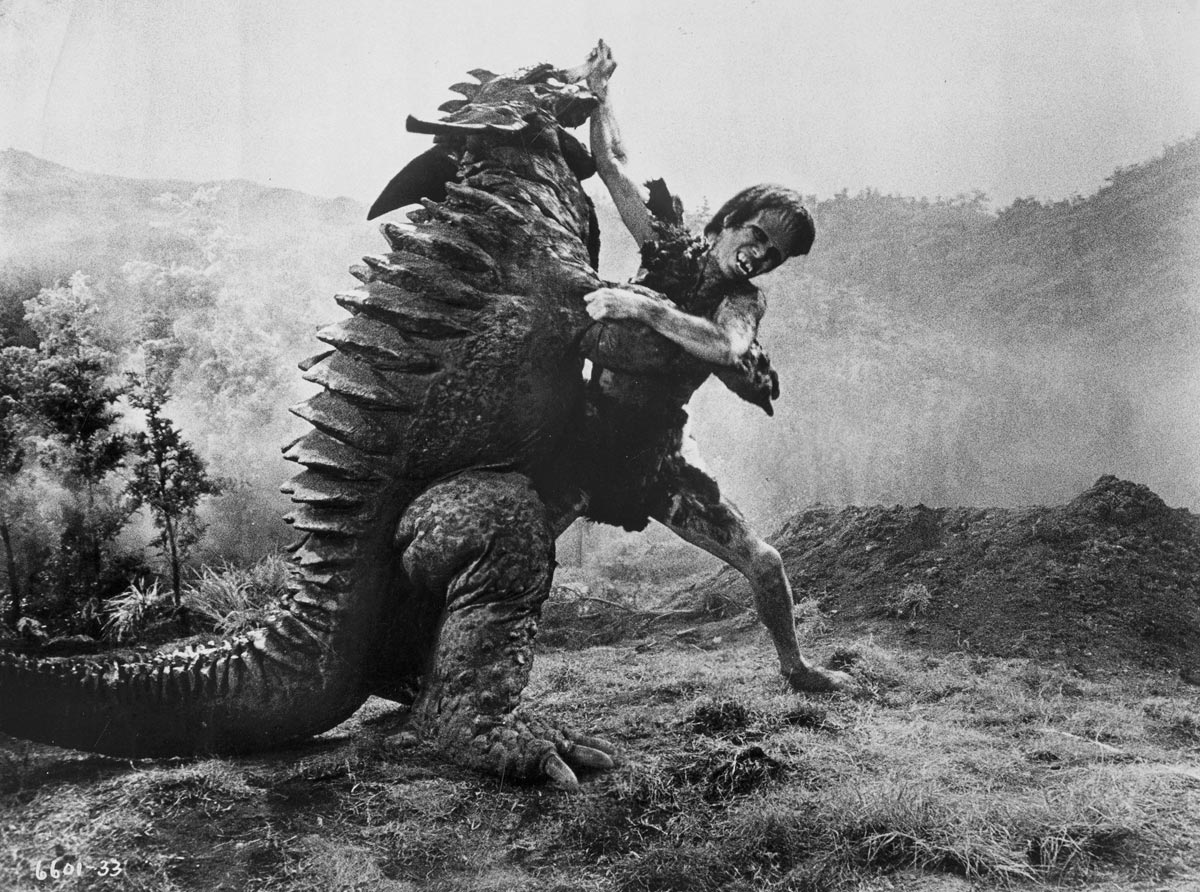
The bulk of the film attends to Frankenstein’s attempts to live off the land in marvelously picturesque, lush, green forests with peaceful intent – and some of the clumsiness expected from a gangly creature that doesn’t know its own strength (hurling an uprooted tree at a tasty-looking bird, it crashes thunderously into a hermit’s cottage). However, a much broader catalogue of damage and destruction leads the Military to cry out for his blood – not realizing that most of the damage is the fault of a frisky, almost puppy-like, subterranean dinosaur dubbed Baragon. Frankenstein finally grapples to the death with Baragon before a magnificent widescreen panorama of flaming trees atop Mt. Fuji in the film’s dazzling finale.
Cut from the US release version was an extra battle, in which Frankenstein’s victory over Baragon was quickly contested by the emergence of yet another monster from a crack in the earth – a slimy giant octopus that Toho called “the Devilfish.” The film’s US distributor, American International Pictures, found this bonus bout anti-climactic, and its loss unknowingly obliterated the strongest link between Frankenstein Conquers the World and the sequel that followed.
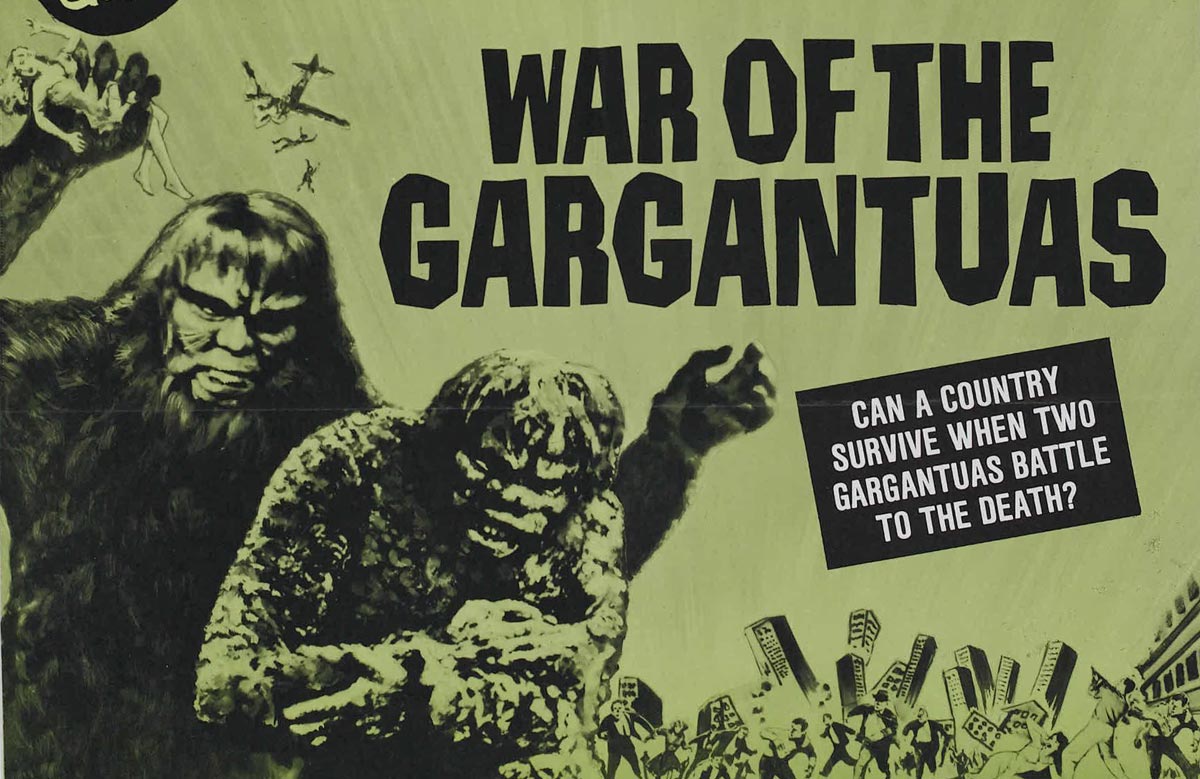
War of the Gargantuas (set five years after the events of the first film) opens with a ship drifting through placid waters, right into what appears to be a still-ongoing fight between Frankenstein and the Devilfish, though Frankenstein himself has seemingly continued to grow and mutate. He is still humanoid, and has an over-ripened form of the same facial features, but he’s now developed scaly skin and shaggy green hair, and is amphibian, requiring regular returns under the sea. In one of the greatest moments Toho ever filmed, one that recalls a similar moment from Charles Laughton’s The Night of the Hunter (1955), seamen drifting along in another ship look over the side and see this emerald monstrosity peering up at them from the sea bottom, through crystal-clear waters. For reasons that may have had something to do with Nick Adams’ decision not to return, Honda opted to obscure the film’s connection to its predecessor. The back story from Conquers is reprised in flashback but altered; we see Kumi Mizuno (doing the same things, albeit under a different character name and with a curlier hairstyle) and new imported male lead Russ Tamblyn (West Side Story) interacting with a feral child that now looks much more like an Ewok than Frankenstein (as he is still called in the Japanese version, while the US version calls him, even when this diminutive, a “gargantua”), and we are told that he was a gentle creature until his disappearance atop Mt. Fuji. After the Green Gargantua (Gaira in Japanese) wreaks havoc at the Tokyo airport – eating a cleaning lady and spitting out her chewed dress! – the Military announces their intention to sky-bomb the monster, and our heroes continue to insist that their Gargantua is innocent, and that bombing it would only scatter its matter and result in thousands of regenerated Gargantuas. (At one point, a stone-faced General asks Tamblyn: “You still want to wet-nurse that monster?”) In a surprise twist, the doctors’ beliefs are vindicated by the sudden appearance (about 50 minutes into the picture) of a Brown Gargantua counterpart (Frankenstein, now renamed Sanda in Japanese – are you following this?), suggesting that the Green one was perhaps regenerated from tissue lost at sea (perhaps during the fight with the Devilfish?) and nourished to its present proportions underwater by a diet of “protein-rich plankton.”
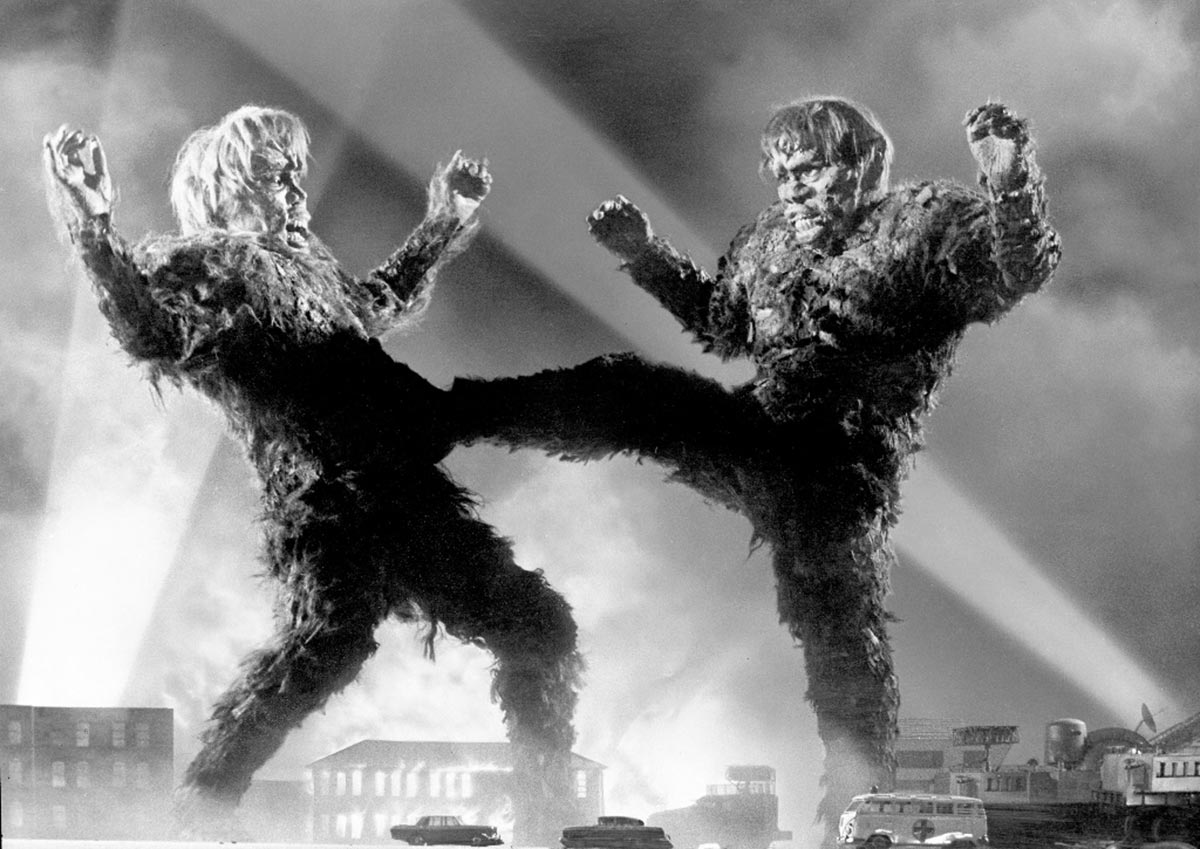
While Nick Adams’ self-dubbed performance in Conquers manages to be fairly respectable and authoritative, it must be noted that War of the Gargantuas is made all the more bizarre by Russ Tamblyn’s strangely disconnected performance. He plays Dr. Stewart like a leery, pot-paranoid hipster, looping some of the loopiest English dialogue found in the genre. When the first sightings of the Gargantua are reported, he chuckles that the witnesses “must’ve been on a bad LSD trip,” and when theories about the origin of the Green Gargantua are being spit-balled, he offers that perhaps their Frankenstein “fell in love with a whale or something, I dunno.” Despite throwing out comments like these, whenever the press or other scientists try to get him to commit to an idea or a plan, he shiftily responds by narrowing his eyes furtively and saying it’s better to look for clues than to have a fixed idea, and better to “investigate” before arriving at a plan. These attitudes don’t look so stupid in print, but he expresses them like a hero who has absolutely no interest in being heroic. When the heroine falls off the edge of a cliff and clings for her life to a branch growing out of a mountainside, he calls down to “hang on,” but he takes so much time getting there, she ends up falling into the monster’s more helpful hand. Tamblyn is a riot, but for many viewers, the film’s highlight – dramatic and comic – is a cameo by American singer-actress Kipp Hamilton, who is shown entertaining a small Tokyo penthouse nightclub audience with the song “The Words Get Stuck In My Throat.” Her shrill warbling of this woebegone love ditty (“If my lips could only say the pretty words that I feel in my heart”), covered by DEVO in their earliest live performances, attracts an unexpected admirer, but fortunately, the Green Gargantua drops Kipp before her dress can get stuck in his.
While War in particular has an undeniably risible quality at times, these films do warrant considerable serious credit. Toho’s Frankenstein and Gargantuas, with their stripped-down, more recognizably human physiologies, acquire a dream-like majesty that the company’s more traditional monsters never had. When they fight, when they fall, and especially when they run – Gargantua and his Pantagruel are like nothing else the genre has ever shown us. Slowed down to assist the illusion of their enormity and gravity, the sheer grace and sinew of these lithe, living things is astounding. They’re so much more than sculpted rubber. But the real magic ingredient of their presence is how deeply connected these images are to our own sense of fantasy; they embody the joy, the awkwardness, the power known to every child who has ever built a toy city on the living room floor and stomped through the middle of it.
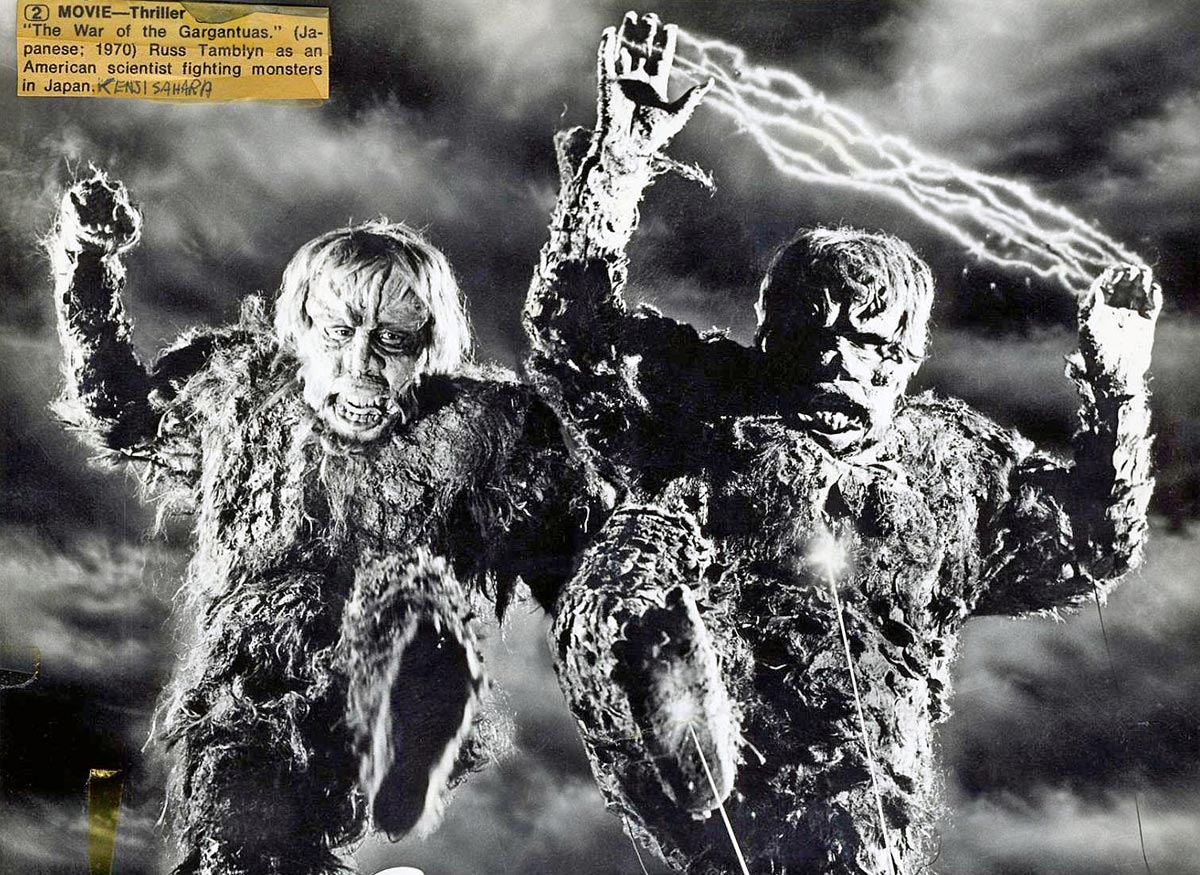
Conquers and War also put forth what was the most radical reworking of the Frankenstein mythos in cinema up to their time. The Frankenstein in Conquers is, appropriately to the character’s history, a tragic figure, a representative of the numerous orphaned children who survived the bombings at Hiroshima and Nagasaki and then had to survive on the prey and refuse of those pulverized cities. The conflict his existence arouses between Japan’s administrators of science and war is not only carried over to the second film, but mirrored and expanded upon by the Yin/Yang conflicts between the two Gargantuas, whose relationship is like that of an emotionally wounded but responsible child taking parental charge of a violent, psychotic sibling. Hardcore devotees of Japanese fantasy may also recognize in their dynamic an echo of the self-loathing expressed by the physical self-rejection of The Manster (1959), another film shot in Japan with English-speaking principals, and perhaps a primal premonition of the Id children birthed by Samantha Eggar in David Cronenberg’s The Brood (1979).
The green and brown coloring of the Gargantuas link them chromatically to Mother Earth itself, land and sea, making War of the Gargantuas not only the usual admonition against cataclysmic warfare in general (and the then-thriving Vietnam war in particular – remember these Gargantuas are Caucasian) but the first of Toho’s pro-ecological statements. (By 1972, Godzilla himself would be facing-off against Hedorah, born of factory smog.) The film also makes a point of identifying the young as our best hope for turning things around, when Russ Tamblyn’s Dr. Paul Stewart points out to Kumi Mizuno’s Akemi that, at the height of the Third Reich, Berlin nightclubs were full of young people. “Whenever there’s an evil force around,” he smiles, “young people start to blossom.” In this way, these films advance the naïve yet conciliatory thought that, fight amongst themselves as nations might, we are all part of the same planet, the same eco-system, the same future. We are all brothers, like Sanda and Gaira.
“Brother against brother, huh? Sounds like some countries I know. Maybe this time the non-violent one’ll win, huh? Ha ha.” – Dr. Paul Stewart
Coming to the New Beverly on September 1 and 2, with War playing in eye-popping 35mm at 7:30 pm, followed by its prequel in 16mm at 9:30 pm.
© 2017 by Tim Lucas. All rights reserved.

